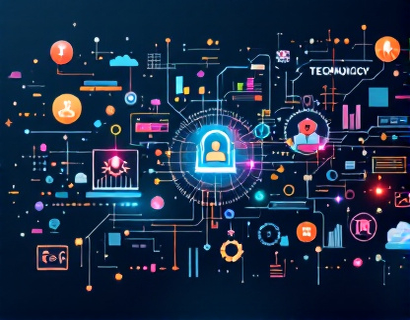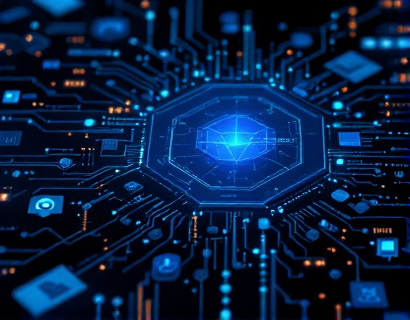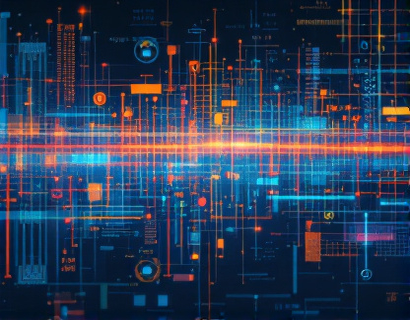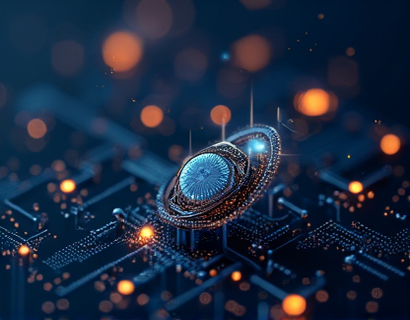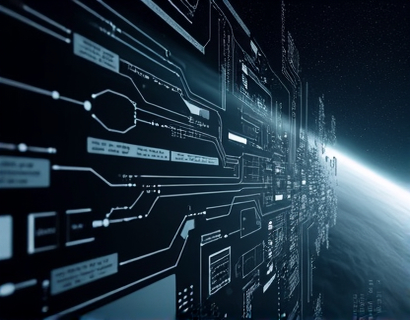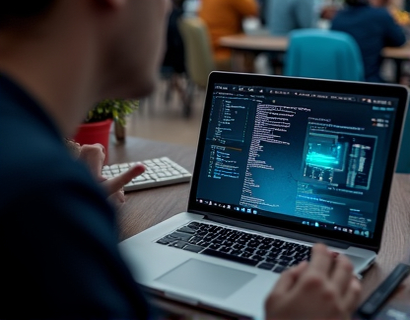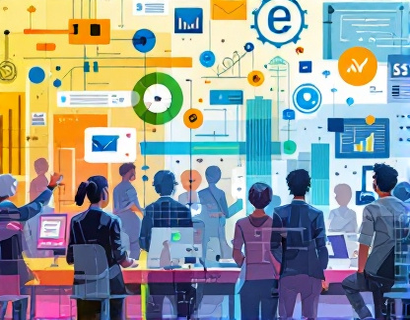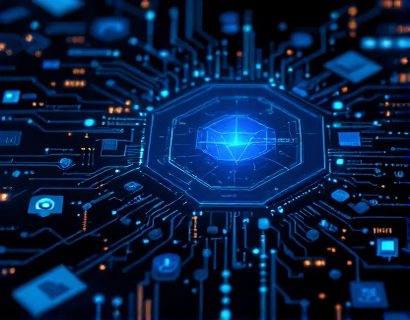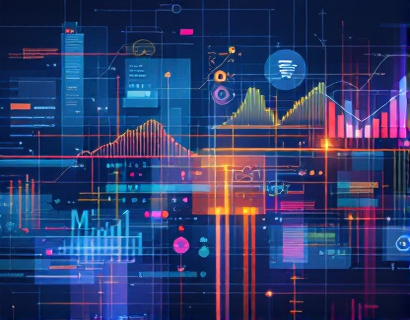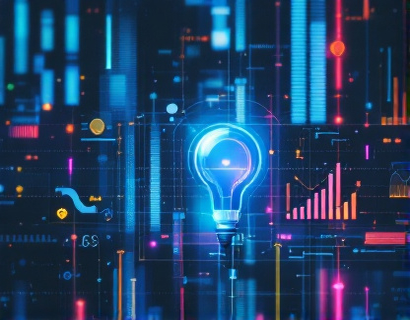Decentralized Productivity: Unlocking Efficiency and Innovation with AI and Crypto Integration
The intersection of artificial intelligence and cryptocurrency has given rise to a new paradigm in digital productivity and collaboration. This emerging field, often referred to as decentralized productivity, leverages the strengths of both technologies to create advanced tools that redefine how we work and interact in the digital space. This article delves into the synergies between AI and crypto, exploring how their integration is paving the way for more efficient, secure, and innovative solutions.
Decentralized productivity tools are built on blockchain technology, which ensures transparency, immutability, and security. These characteristics are crucial for fostering trust among users and enabling seamless collaboration across borders and organizations. By integrating AI, these tools can automate complex tasks, provide intelligent insights, and adapt to user needs in real-time, thereby enhancing productivity and driving innovation.
Understanding Decentralized Productivity
Decentralized productivity refers to the use of decentralized applications (dApps) and platforms that operate on blockchain networks. Unlike traditional centralized systems, where data and control are held by a single entity, decentralized systems distribute these functions across a network of nodes. This distribution not only enhances security by eliminating single points of failure but also promotes transparency and fairness.
The core principle of decentralization aligns well with the ethos of the crypto community, which values openness, accessibility, and user empowerment. When combined with AI, which excels in processing and analyzing vast amounts of data, the potential for transformative productivity tools becomes evident. These tools can automate routine tasks, provide predictive analytics, and offer personalized experiences, all while maintaining the integrity and security of decentralized networks.
AI in Decentralized Systems
AI plays a pivotal role in decentralized productivity by enhancing the capabilities of dApps and smart contracts. Machine learning algorithms can be deployed to analyze data from various sources, identify patterns, and make informed decisions. For instance, AI-driven chatbots can facilitate user interactions, providing support and guidance in real-time without the need for human intervention.
Moreover, AI can optimize the performance of decentralized networks by managing resource allocation, predicting network congestion, and ensuring smooth operations. Smart contracts, the backbone of many decentralized applications, can be augmented with AI to execute more complex logic and adapt to changing conditions dynamically. This fusion of AI and smart contracts enables the creation of self-executing agreements that are not only secure but also intelligent and responsive.
Enhanced Collaboration and Productivity
One of the most significant benefits of decentralized productivity tools is the enhancement of collaboration among distributed teams. Traditional collaboration tools often suffer from issues such as data silos, lack of transparency, and security concerns. Decentralized platforms eliminate these issues by providing a transparent and secure environment where all participants have equal access to information and tools.
AI-powered collaboration tools can further amplify these benefits. For example, AI can analyze communication patterns and suggest optimal collaboration strategies, identify potential bottlenecks, and propose solutions to improve workflow efficiency. Virtual assistants driven by AI can manage schedules, prioritize tasks, and ensure that all team members are aligned and productive.
Additionally, decentralized identity management systems, enhanced by AI, can streamline user authentication and access control. This ensures that only authorized users can access sensitive information and tools, thereby maintaining the integrity of collaborative projects. The use of non-fungible tokens (NFTs) for digital credentials and assets can also simplify the verification process, making it faster and more secure.
Innovative Applications in Various Industries
The applications of decentralized productivity tools are vast and varied, spanning multiple industries. In the realm of finance, decentralized finance (DeFi) platforms leverage AI to offer sophisticated trading algorithms, risk management tools, and automated investment strategies. These platforms provide users with greater control over their financial assets while ensuring transparency and security through blockchain technology.
In the healthcare sector, decentralized health records managed on blockchain can be enhanced with AI to provide predictive analytics and personalized treatment recommendations. Patient data can be securely shared among healthcare providers, ensuring continuity of care and improving patient outcomes. AI-driven diagnostic tools can analyze medical data in real-time, assisting doctors in making more accurate and timely decisions.
The supply chain industry can also benefit significantly from decentralized productivity tools. Blockchain can provide an immutable record of transactions, while AI can optimize logistics, predict demand, and detect fraud. Smart contracts can automate payment processes and ensure compliance with regulatory requirements, reducing the need for intermediaries and lowering costs.
Challenges and Considerations
Despite the numerous advantages, the integration of AI and crypto in decentralized productivity tools is not without challenges. One of the primary concerns is the technical complexity involved in building and maintaining these systems. Developers need a deep understanding of both blockchain technology and AI to create robust and efficient solutions.
Another challenge is the regulatory landscape. As decentralized technologies and AI continue to evolve, regulatory frameworks are still catching up. Ensuring compliance with existing laws and navigating the uncertainties of future regulations is crucial for the adoption and success of these tools.
Scalability is also a significant issue. Blockchain networks, particularly those using proof-of-work consensus mechanisms, can face performance bottlenecks as the number of transactions increases. AI can help mitigate some of these issues by optimizing network operations and developing more efficient consensus algorithms, but it remains an ongoing area of research and development.
Future Prospects
The future of decentralized productivity is promising, with continuous advancements in both AI and blockchain technology. As AI algorithms become more sophisticated, their ability to enhance decentralized tools will only grow. For instance, the development of more advanced natural language processing (NLP) models can lead to more intuitive and user-friendly interfaces for decentralized applications.
Blockchain technology itself is evolving, with new consensus mechanisms and scalability solutions emerging to address current limitations. The integration of layer 2 solutions, such as rollups and sidechains, can significantly improve transaction throughput and reduce costs, making decentralized productivity tools more accessible and practical for widespread use.
The convergence of AI and crypto is also likely to spur innovation in other areas, such as decentralized data markets, where users can monetize their data while maintaining control and privacy. AI-driven analytics platforms built on blockchain can provide valuable insights to businesses and individuals, fostering a more data-driven economy.
Conclusion
The merging of artificial intelligence and cryptocurrency is revolutionizing the landscape of productivity and digital collaboration. Decentralized productivity tools, powered by these technologies, offer a new level of efficiency, security, and innovation. While challenges remain, the potential benefits are substantial, making this an exciting and transformative space for tech innovators and early adopters. As the field continues to evolve, the possibilities for enhancing our digital experiences and driving global productivity are vast and largely untapped.



